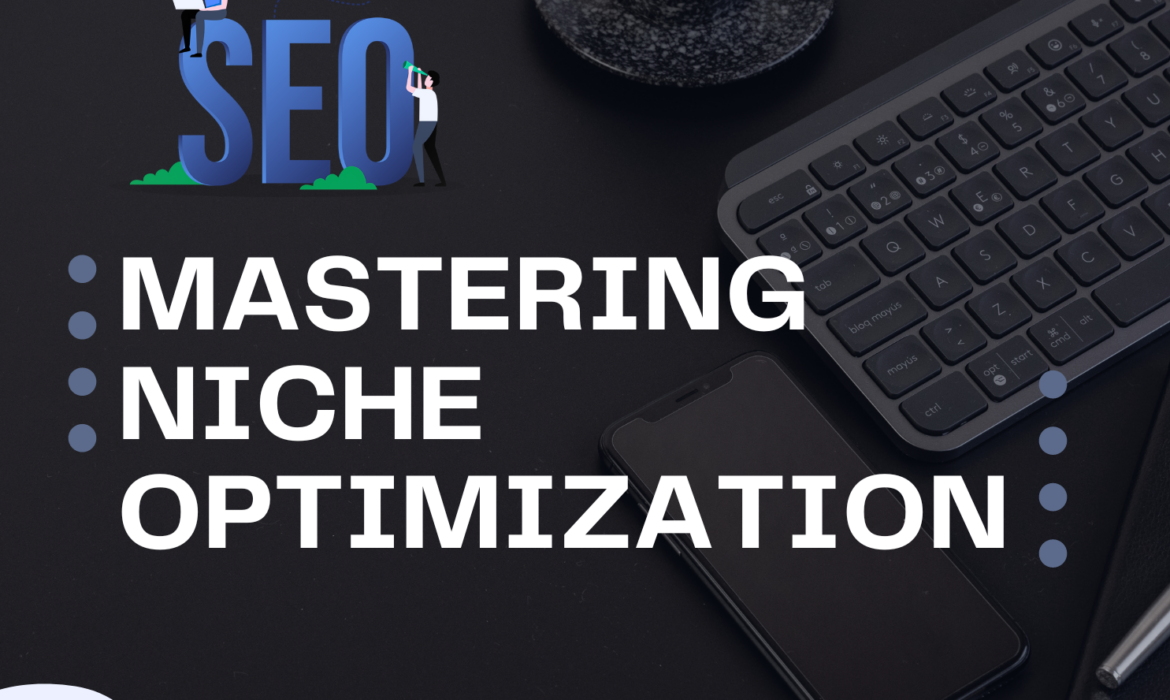SEO Strategy in 2024
In the ever-shifting landscape of digital marketing, SEO remains a critical pillar of online success. However, as we venture further into 2024, the way we approach SEO has evolved significantly. Keywords, once the cornerstone of SEO strategies, are now just one piece of a much larger puzzle. Today, creating high-quality content that resonates with users and aligns with search engine algorithms is more important than ever. Let’s explore how to evolve your SEO strategy from focusing solely on keywords to a more holistic content-driven approach.
In years past, keywords were the key factor of any SEO strategy. Marketers and content creators obsessed over finding the right terms to target, often focusing on high-volume search queries that promised traffic spikes. While this approach still holds some merit, it’s no longer sufficient in the modern SEO ecosystem. The game has changed, and the rules have evolved. you’ll have wasted time, effort and money.
How to implement strategy to make SEO optimized content
1. Understanding the Search Landscape
The first step for your SEO strategy is to look beyond the keywords themselves. Start by researching your head term— that encapsulates your product, service, or topic. For example, if you’re in the publishing industry, your head term might be “publishing blog.” Enter this term into Google and analyze the results. Who’s dominating the first page? What kind of content are they publishing? By examining the SERP (Search Engine Results Page), you gain valuable insights into the competitive landscape and can identify opportunities for differentiation.
2. Embracing Search Intent
Today’s search engines are smarter than ever, and they prioritize user intent over sheer keyword frequency. The goal is to understand what users are genuinely looking for when they type a query. Are they seeking detailed guides, quick answers, or interactive content? Align your content strategy with these insights. Instead of focusing solely on incorporating keywords, create content that answers the questions and addresses the needs of your audience.
3. Leveraging AI and Automation
AI has become a significant player in the SEO world, from content creation to keyword analysis. Tools powered by AI can help you generate content ideas, optimize your writing, and even predict trends. However, it’s essential to use AI as a complement to human creativity, not a replacement. AI can assist in identifying patterns and generating drafts, but the final content should always be infused with human insight and originality.
4. Focusing on Mobile Optimization
In 2024, mobile-first indexing is the norm. This means that search engines primarily use the mobile version of your site for indexing and ranking. Ensure that your content is optimized for mobile devices—this includes responsive design, fast loading times, and easily navigable layouts. A seamless mobile experience can significantly impact user satisfaction and search rankings.
5. Creating High-Quality, Unique Content
With the rise of AI-generated content, the emphasis on producing high-quality, unique material has never been more critical. Search engines are increasingly looking for content that offers genuine value and originality. This means providing in-depth analysis, fresh perspectives, or actionable insights that stand out from the crowd. Strive to create content that not only ranks well but also engages and resonates with your audience.


Competitor Analysis
Once you’ve nailed down your ideal keyword, it’s time to focus on your competition. In SEO, success hinges on understanding not just what you do, but what your rivals are doing. Forget just having the longest blog post or the most backlinks—today’s Google algorithm considers a range of factors like site age, authority, and user experience.
Here’s how to stay ahead:
- Content Dive: Analyze the type and depth of content your competitors publish. Aim to create content that’s even more valuable.
- Category Check: Look at the categories they cover. Find gaps and fill them with your unique insights.
- Background Insight: Investigate the backgrounds of competitors’ publishers. This can reveal their strategies and credibility.
- Site Structure: Evaluate their website’s user experience and technical performance. Ensure your site meets or exceeds these standards.

Conclusion: The Road Ahead
As we navigate the SEO landscape in 2024, it’s clear that success depends on more than just targeting the right keywords. It’s about creating user-centric content that aligns with search intent, leveraging AI responsibly, and maintaining a focus on quality and relevance. By evolving your strategy to meet these new demands, you’ll be better positioned to not only rank higher in search results but also engage and connect with your audience in meaningful ways. The journey from keyword to content is an ongoing process, and staying ahead requires both innovation and adaptation. Embrace the change, and let your SEO strategy evolve to reflect the dynamic nature of the digital world.
The journey from keyword to content is an ongoing process, and staying ahead requires both innovation and adaptation. Embrace the change, and let your SEO strategy evolve to reflect the dynamic nature of the digital world.
SEO beyond the basics: Mastering niche optimization
In the ever-changing digital landscape, Search Engine Optimization (SEO) remains a cornerstone of a thriving online presence. Yet, with search engines like Google constantly evolving their algorithms, sticking to traditional SEO methods is no longer enough. To truly boost your website’s visibility and drive organic traffic, mastering advanced SEO strategies has become essential.
The essence of this article is clear and impactful: SEO is not a one-time effort but an ongoing strategic endeavor. By adopting advanced techniques and best practices, professionals across various fields can fully unleash their online content’s potential, ensuring it effectively reaches their target audience.
Update with SEO Algorithms
To stay relevant, you need to align your website content with google seo algorithms. some recent updates are like-
- BERT Update (2019): Enhances understanding of search query context and intent.
- Core Web Vitals: Focus on page speed, interactivity, and visual stability.
- Mobile-Friendliness and HTTPS: Increased importance for rankings.
- Optimize User Experience: mobile-friendliness and security.
- Create High-Quality Content: Align with user intent and engagement.
- Adapt to New Trends: Optimize for voice search and featured snippets
Mastering SEO niche optimization means refining your approach to excel within a specific market segment. This involves targeting long-tail keywords, optimizing for local searches, and utilizing industry-specific platforms. Prioritize creating high-quality, targeted content that resonates with your audience’s needs and intentions.
Improve user experience with mobile-friendly designs and fast-loading pages. Stay flexible by keeping up with the latest trends and algorithm changes. By focusing on these niche strategies, you can enhance your website’s visibility and gain a competitive advantage in your specialized area.


Advanced SEO Techniques
- Content Clusters: Create interlinked content around central topics to boost authority and structure.
- Semantic Search: Use related terms and LSI keywords to align with user intent.
- Voice Search: Optimize for natural language and question-based queries.
- Technical Audits: Regularly check for crawl errors, broken links, and speed issues.
- Schema Markup: Implement structured data for rich snippets and better visibility.
- Link Building: Acquire high-quality backlinks through digital PR and influencer outreach.
- Local SEO: Enhance with local schema, consistent citations, and community engagement.
- Mobile-First Indexing: Ensure mobile optimization with responsive design and fast loading.
- Conversion Optimization: Improve landing pages and calls to action based on user behavior.
- Competitor Analysis: Monitor competitors’ strategies for insights and opportunities.

Conclusions
SEO is a continuous process that requires regular monitoring, data analysis, and adjustments to stay competitive. Stay updated on emerging trends and technologies to keep ahead of the curve.
Prioritize creating high-quality, relevant content that addresses user needs and intent. Ensure a positive user experience by optimizing for mobile responsiveness and fast loading times. Adapt your content for voice search using natural language and long-tail keywords. Establish industry authority by demonstrating expertise and building trust with your audience. For businesses with physical locations, optimize for local SEO to enhance local search visibility.
By evolving your SEO strategies and staying proactive, you’ll be well-positioned for long-term success in the dynamic digital landscape.
Digital Marketing as a Career
Exploring Digital Marketing as a career: Your guide to a thriving field
Welcome to the dynamic world of digital marketing!
If you’ve ever wondered what it’s like to turn clicks into conversions and data into strategy, you’re in the right place!
Digital marketing is not just a career; it’s a vibrant, ever-evolving adventure that blends creativity with technology. Ready to dive in?
Let’s explore what makes this field so exciting and how you can embark on your own digital marketing journey!
1. Discover your Digital passion
Before diving into the specifics, take a moment to reflect on your interests
Interactive Quiz: Find Your Digital Niche!
- Do you love storytelling and creating engaging content? Consider Content Marketing.
- Are you a data enthusiast who loves analyzing trends? SEO and Analytics might be your thing.
- Do you enjoy connecting with people and building relationships? Social Media Marketing could be perfect.
- Are you fascinated by the science of ads and ROI? Look into PPC Advertising.
2. The Skillset: what you need to shine
- Creativity: For designing captivating campaigns and content.
- Analytical Skills: To interpret data and optimize strategies.
- Technical Know-How: Understanding tools and platforms.
- Communication: Crafting messages that resonate with your audience.

3.The Roadmap : How to get started
Starting a career in digital marketing can be both thrilling and daunting. Here’s a roadmap to guide you:
- Educate Yourself: Take online courses, read blogs, and watch webinars. Platforms like Coursera, Udemy, and LinkedIn Learning offer fantastic resources.
- Gain Experience: Internships, freelance projects, or personal projects can give you practical experience.
- Build Your Portfolio: Showcase your work through a personal website or a professional portfolio.
- Network: Join digital marketing groups, attend industry events, and connect with professionals on LinkedIn.
4. Navigating the digital marketing landscape
Digital marketing is constantly evolving with new trends and technologies. Staying current is key to thriving in this field.

5. The future of digital marketing
The future of digital marketing is bright and full of opportunities. With advancements in AI, machine learning, and automation, the possibilities are endless. As the field grows, so will the demand for skilled professionals who can navigate these new technologies.
Conclusion: Your Digital Marketing Journey Awaits
Digital marketing is more than a career; it’s a chance to be at the forefront of innovation, creativity, and strategy. With the right skills, experience, and mindset, you can make your mark in this exciting field.
Ready to embark on your digital marketing adventure?
Dive in, explore, and let your creativity flow. Your future in digital marketing is just a click away!
Crafting Digital Experiences: The Art of Modern Web Development
Creating seamless online Experiences : Modern Web Development
In the bustling digital landscape, where every click, scroll, and swipe carries the potential to engage or lose a user, the art of web development has evolved into more than just coding.
It’s about crafting digital experiences that resonate, captivate, and drive action.
Welcome to the world where creativity meets technology, where every pixel counts, and where user experience reigns supreme!
The Symphony of Design and Development
Imagine a symphony where each instrument plays a crucial role, yet it’s the harmony that leaves the audience in awe. In web development, design and development are those instruments.
The designer’s creative vision is the melody, full of color and emotion, while the developer’s code is the rhythm, providing structure and flow.
When these two work in unison, the result is a digital experience that not only looks beautiful but also functions seamlessly.
User Experience: The Heartbeat of Web Development
At the core of every successful website lies an exceptional user experience (UX). It’s the heartbeat that keeps users engaged, guiding them effortlessly through your content.
A well-crafted UX is intuitive—users don’t need to think about what to do next; they just do it. From the moment they land on your site, every element, from navigation to load times, works together to create a journey that feels natural and rewarding.
But great UX doesn’t happen by accident. It’s the result of meticulous planning, understanding user behavior, and constantly refining the design based on feedback.
It’s about anticipating needs and delivering on expectations, making every interaction a positive one.
SEO and Web Development: A Dynamic Duo
In the vast expanse of the internet, visibility is key. And that’s where search engine optimization (SEO) comes into play. But SEO isn’t just about keywords and backlinks—it’s also about how your site is built. A well-structured, fast-loading website is not only user-friendly but also search engine-friendly.
When search engines like Google crawl your site, they reward well-optimized pages with higher rankings, driving more organic traffic your way.
Think of SEO and web development as a dynamic duo, working together to ensure that your beautifully designed site is also easily discoverable. The art of modern web development is knowing how to balance both, creating a site that is as visible as it is visually stunning.
The Rise of Mobile-First Design
In a world where smartphones are an extension of ourselves, mobile responsiveness is no longer optional—it’s essential. The shift to mobile-first design has transformed the way websites are built. It’s about creating a digital experience that is consistent across all devices, from desktops to tablets to smartphones.
But mobile-first design isn’t just about shrinking content to fit smaller screens. It’s about rethinking the entire user experience, prioritizing what’s most important for mobile users, and ensuring that navigation remains intuitive, content remains accessible, and the overall experience remains seamless, no matter the device.
Voice Search: The New Frontier
As technology advances, so do the ways users interact with it. Voice search is rapidly becoming a preferred method for finding information online.
With the rise of voice-activated devices, optimizing your website for voice search is crucial to staying ahead of the curve.
Voice search optimization means understanding how people speak, not just how they type. It’s about creating content that answers questions directly, using natural language, and ensuring that your site is ready to meet the demands of this growing trend.
Testing, Quality Assurance, and Beyond
Before a website goes live, it must pass through rigorous testing and quality assurance. This step is crucial to catching any last-minute issues that could impact the user experience.
It’s about ensuring that every link works, every page loads quickly, and every design element appears as it should across all devices and browsers.
But the work doesn’t stop once the site is live. Ongoing maintenance is essential to keep the site performing well, adapting to new technologies, and meeting the ever-changing needs of users.
The Art of Modern Web Development
“Crafting Digital Experiences: The Art of Modern Web Development” is more than just a process; it’s an art form. It’s about balancing creativity with technical expertise, understanding user needs, and anticipating trends. As technology continues to evolve, so too must our approach to web development.
In this ever-changing landscape, staying adaptable, innovative, and user-focused is the key to creating digital experiences that truly shine. Whether you’re a seasoned developer or just starting out, embracing the art of modern web development means committing to a journey of continuous learning, collaboration, and creativity.
It’s about crafting digital experiences that leave a lasting impact, making the web a more engaging, accessible, and beautiful place for all.
A to Z Category of Digital Marketing
E
xploring the universe of digital marketing: All categories unveiled
Overview of digital marketing
Digital marketing includes all online marketing strategies such as content creation, email campaigns, SEO, and social media. If it’s delivered through the Internet and reaches digital devices, it’s part of this field.
As technology advances, digital marketing has become crucial for businesses to effectively connect with their target audiences and thrive in the modern digital landscape.
Welcome to the vibrant and ever–evolving world of digital marketing!
Whether you’re a seasoned pro or a curious newbie, understanding the diverse categories of digital marketing can unlock powerful strategies to elevate your brand. Ready for a whirlwind tour?
Let’s dive into each category and discover how they can transform your online presence.
content creation, email campaigns, SEO, and social media. If it’s delivered through the Internet and reaches digital devices, it’s part of this field.

1. Search Engine Optimization (SEO)
Imagine your website as a hidden gem in a vast digital ocean. SEO is your treasure map, guiding users to your site by improving its visibility on search engines.
By optimizing your content with relevant keywords, enhancing your site’s structure, and earning high-quality backlinks, you’ll climb those search engine rankings and attract organic traffic. It’s all about making your website more discoverable!
2. Content Marketing
Content is not just king; it’s the entire kingdom. Content marketing involves creating and sharing valuable, relevant content to engage your audience and build trust.
Whether it’s blog posts, videos, infographics, or podcasts, quality content educates, entertains, and inspires. It’s about delivering the right message to the right people at the right time.
3. Social Media Marketing
Social media is where conversations happen and trends take flight. Social media marketing leverages platforms like Facebook, Instagram, Twitter, and LinkedIn to connect with your audience, build brand loyalty, and drive traffic.
From crafting captivating posts to running targeted ads, it’s all about engaging with your audience and growing your social presence.
4. Email Marketing
Email marketing is your direct line to your audience’s inbox. It’s about crafting personalized and targeted messages that nurture relationships, promote offers, and drive conversions.
With segmentation and automation, you can send the right message to the right person at the right time, turning leads into loyal customers.
5. Pay-Per-Click (PPC) Advertising
PPC is like a fast-pass to the front of the line. By bidding on keywords, you place your ads in front of users actively searching for your products or services.
With platforms like Google Ads and Bing Ads, you only pay when someone clicks on your ad, making it a cost-effective way to drive targeted traffic and generate leads quickly.
6. Influencer Marketing
Influencer marketing taps into the power of trusted voices.
By partnering with influencers who align with your brand values, you can reach their engaged audience and build credibility. Whether it’s through sponsored posts, reviews, or collaborations, influencers help amplify your message and drive authentic engagement.
7. E-commerce Marketing
E-commerce marketing focuses on driving sales for online stores.
This includes strategies like product listings optimization, promotional campaigns, and customer retention tactics.
By leveraging various digital channels, you attract shoppers, enhance their shopping experience, and drive conversions.
8. Web Analytics
Web analytics is your data detective.
By tracking and analyzing metrics like website traffic, user behavior, and campaign performance, you gain valuable insights into what’s working and what’s not. Tools like Google Analytics help you make data-driven decisions and refine your digital marketing strategies.
How to plan the “Social Media Content” for your Business
Planning social media content for your business might feel overwhelming, but it doesn’t have to be. Picture a simple roadmap guiding each post, ensuring your content hits the mark every time.
Whether you’re starting fresh or fine-tuning your strategy, this guide will help you create a plan that connects with your audience and boosts your brand. Ready to turn chaos into clarity?
Let’s dive in and start crafting content that works.
1. Define Your Goals
- Brand Awareness: Increase your brand’s visibility and recognition.
- Engagement: Foster interactions and build a community around your brand.
- Lead Generation: Drive potential customers to your website or products.
- Customer Support: Use social media as a platform for addressing customer queries and issues.
2. Know Your Audience
- Demographics: Age, gender, location, interests, and behavior.
- Pain Points: Understand their challenges and how your product or service can solve them.
- Preferred Platforms: Identify which social media platforms your target audience uses the most.
3. Content Creation
- Visuals: Design graphics, videos, and images that align with your brand identity.
- Copywriting: Craft compelling captions, headlines, and calls-to-action.
- Tools: Use tools like Canva for design, Grammarly for writing, and scheduling tools like Buffer or Hootsuite.
4. Engage and Monitor
- Respond to Comments and Messages: Be active in conversations with your audience.
- Monitor Performance: Use platform analytics to track engagement, reach, and conversions.
5. Analyze and Adjust
- Review Performance: Analyze your content’s performance regularly (weekly or monthly).
- A/B Testing: Test different types of content to see what resonates best with your audience.
- Adjust Strategy: Refine your content plan based on what’s working and what’s not.
6. Incorporate Trends and Timely Content
- Stay updated with social media trends and incorporate relevant topics or hashtags.
- Plan content around holidays, events, or seasonal trends relevant to your industry.
7. Collaborate and Leverage Influencers
- Partner with influencers or other brands to reach a broader audience.
- Share guest posts, co-host events, or run joint campaigns.
Necessity of Social Media Content planning
- Social media content planning keeps you organized
- A content planning chart helps you avoid last minute pressure
- Content planning connects your social media activity to marketing goals
Ready to live your content !
You’ve created your social media blueprint—now it’s time to act! Whether you’re planning, brainstorming, or analyzing, take that first step today. Share your progress in the comments, and stay tuned for more tips. Your success story is just beginning!









